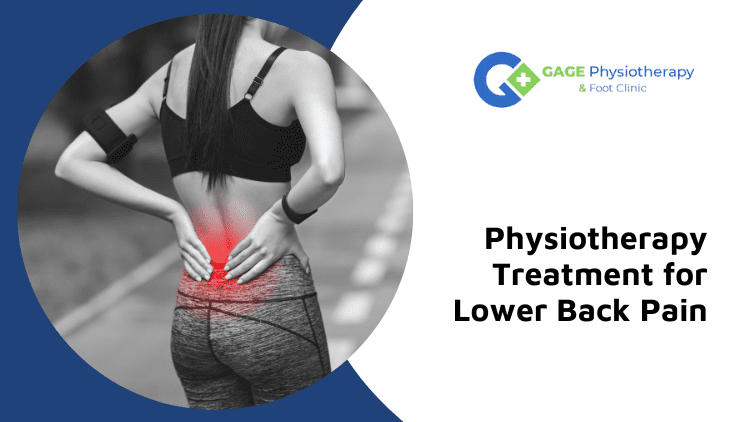
Every individual eventually experiences lower back pain in their lives, whether they work at a desk, lift heavy objects regularly, play sports, run, or perform a variety of other activities that can cause neck and back pain. Thankfully, there are numerous ways to relieve most types of neck and back pain and avoid it from persisting.
Maintaining a healthy way of living can go a long way toward protecting against pain in the back. However, when the discomfort does occur, there are several therapies available that can assist with back and neck pain and also minimize its reoccurrence.
Below we’ll check out various local physiotherapy treatments for lower back pain in Hamilton Mountain in order to increase performance, relieve pain and avoid re-injury.
Manual Treatment Options
One of the most effective ways to treat lower neck and back pain is through hands-on therapy. Physiotherapists use a selection of techniques, including joint mobilization, soft tissue massage, and electrotherapy, to reduce inflammation, increase blood flow and soothe the pain. A 2017 study discovered that manual therapy was one of the most effective therapy options for lower neck and back pain.
If your discomfort is brought on by a particular injury, such as a sprain or sprain, manual treatment can help in reducing swelling and also bring back strength to the damaged area. If your discomfort is caused by overly limited muscular tissues, hand-operated treatment can aid in recovering them to their regular length and flexibility. It’s important to keep in mind that this treatment can take several sessions to start eliminating pain. Before starting any treatment, it is ideal to speak with a physiotherapist.
Ultrasound Therapy
A treatment method that helps with tissue recovery and discomfort alleviation, ultrasound therapy is likewise often recommended by physiotherapists to treat lower back pain. While the study is mixed concerning the efficiency of ultrasound therapy in reducing pain in the back, some researchers have discovered that it can significantly decrease pain as well as promote recovery among clients. A 2019 research revealed that ultrasound therapy is just as effective as a drug for alleviating discomfort.
Like manual therapy, ultrasound treatment works by boosting blood circulation and reducing swelling. It likewise facilitates tissue healing and also can be incredibly efficient in treating soft tissue injuries.
TENS Pain Relief System
Transcutaneous Electric Nerve Excitement (TENS) is a therapy method your physiotherapist might suggest to ease lower back pain and also promote healing.
How does it work?
TENS units supply light electric impulses to the nerves near the area of your discomfort, minimizing the experience of pain. Some TENS devices have discs that are put on the location of pain, which expands the benefits of TENS treatment. These discs can be used by themselves or with a TENS system.
While TENS systems and discs also work in treating low-grade pain, they do not provide lasting alleviation or deal with the underlying reason for your discomfort. They are best made used as a part of a short-term discomfort monitoring approach, such as after an injury. While TENS devices and discs show promising results in minimizing discomfort and promoting healing, they are not advised as a long-lasting treatment alternative but as an add-on therapy.
Exercise Therapy
The exercise therapy program is among the most reliable ways to stop lower back pain, as it is the beginning of other health and wellness problems. When incorporated with other treatment options (such as drugs and gentle, hands-on techniques), exercise can be a lot more reliable at eliminating pain as well as stimulating recovery.
Your physiotherapist can prescribe different categories of exercise programs and also stretching workouts that will enhance and also loosen your muscular tissues, improving your back health and wellness.
While cardio exercises are most frequently recommended to treat lower back pain, resistance health care training can likewise ease discomfort and also promote recovery.
When it comes to pain in the back, punctuality and duration matters. Regularly engaging in light exercises or for about half an hour a day can help reduce pain and promote recovery, specifically if you’re experiencing chronic pain.
If you’re experiencing chronic lower back pain, you might want to consider high-intensity period training or HIIT: a sort of exercise that has been proven reliable in promoting healing, strengthening muscle tissues and reducing discomfort. Again, your physiotherapist can recommend an exercise routine that’s specifically customized to your specific condition.
Final Thoughts
Lower pain in the back can be excruciating, particularly if it’s acute. While there are numerous ways to alleviate reduced back pain and stop it from persisting, it is essential to tailor your therapy approach to your detailed demands. While one therapy may work in treating discomfort in someone, it may not be as efficient in others. Our healthcare professionals and physiotherapists at Gage Physiotherapy & Foot Clinic can tailor the treatment depending on your needs so that you find the program that is most effective for you.

